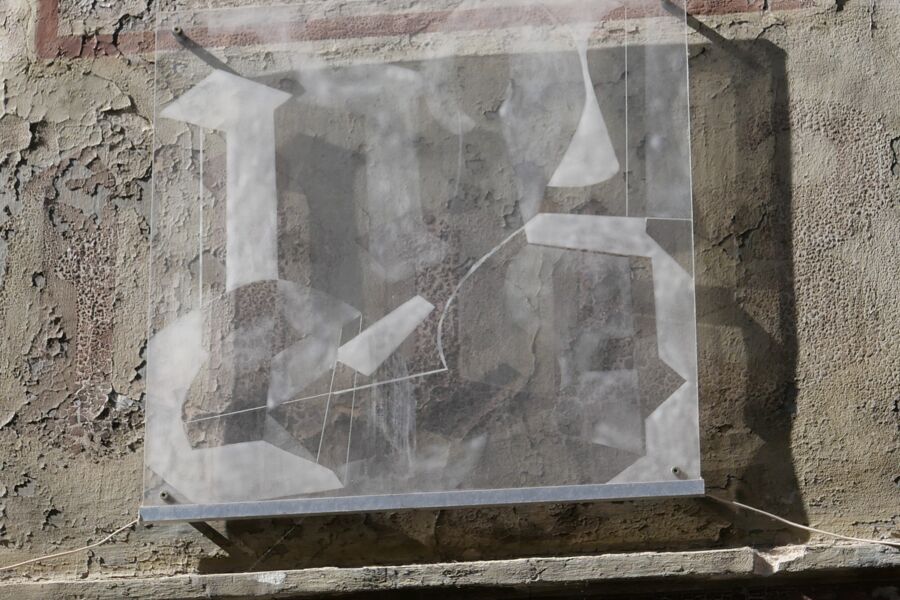In the middle of reconstructed fronts from Wilhelminian times at 34 Böhmische Straße, produces a counterpoint. The artistically alienated front of the house of art “Raskolnikov” forms an eye-catcher and hints at the gallery of the same name behind it as well as the history of the little listed house from 1836.
Fragments of letters etched in acrylic glass bring to mind the former outdoor advertising for craftsmen and manufacturers, whose premises were often hidden in the backyards.
Hence, they had their names written weather-proof directly onto the outside walls. The paint formed a solid chemical bond with the plastering, which is still recognizable here, for example, in the extinct word “long-distance number”.
The phone line once belonged to house owner and decoration painter Julius Jahn, who lived at 4 Pulsnitzer Straße and had his workshop there in the rear building. When he died in 1931, his heirs moved in. It was probably the son Willy Jahn who continued the business of the deceased on these premises.
Common people were still renting places in the front building. The rear building, too, had room for flats, but also for a small dancing hall, storage facilities and workshops. The directories list carpenters, printers or locksmiths. The ramp in the yard is supposed to originate from an iron foundry.
The weather-beaten writing at the front inspired artist Janina Kracht when she took part in the project “The material glass” in May 1999. Her position towards the topic has coined the street scene ever since.
Art can also be found behind the entrance, lit by a coloured light bulb. On the first floor, Iduna Böhning-Riedel is manager of the art society’s promotion gallery; she organises exhibitions and attends the artists’ exchange with Dresden’s partner towns and cities. The works of the scholarship holders are exhibited in the belonging guesthouse. On the ground floor, the bar and restaurant “Raskolnikoff” is booming with a bar and outside seating.
This name hints at the protagonist in Dostoyevsky’s novel “Crime and Punishment”. These were hotly debated topics in the times of political change, when Molotov cocktails were flying through the windows of meeting places like this. Luckily, the floor was covered in heathland sand – which doesn’t exist anymore. Today, it is small glasses filled with sand that are part of the charming decoration and that are a reminder of the unconventional new life that had been filling these old walls in the late eighties. With the occupation of the building, young artists and students protested against its decay and, moreover, created rooms for themselves to live and work – from which later the art society emerged.
Dresden’s first women’s society, founded in 1814, owned the adjacent premises up to their destruction in 1945. Today you will find the passage to Bautzner Straße there. It is named after one of the first three women in Saxony’s parliament, Julie Salinger.









